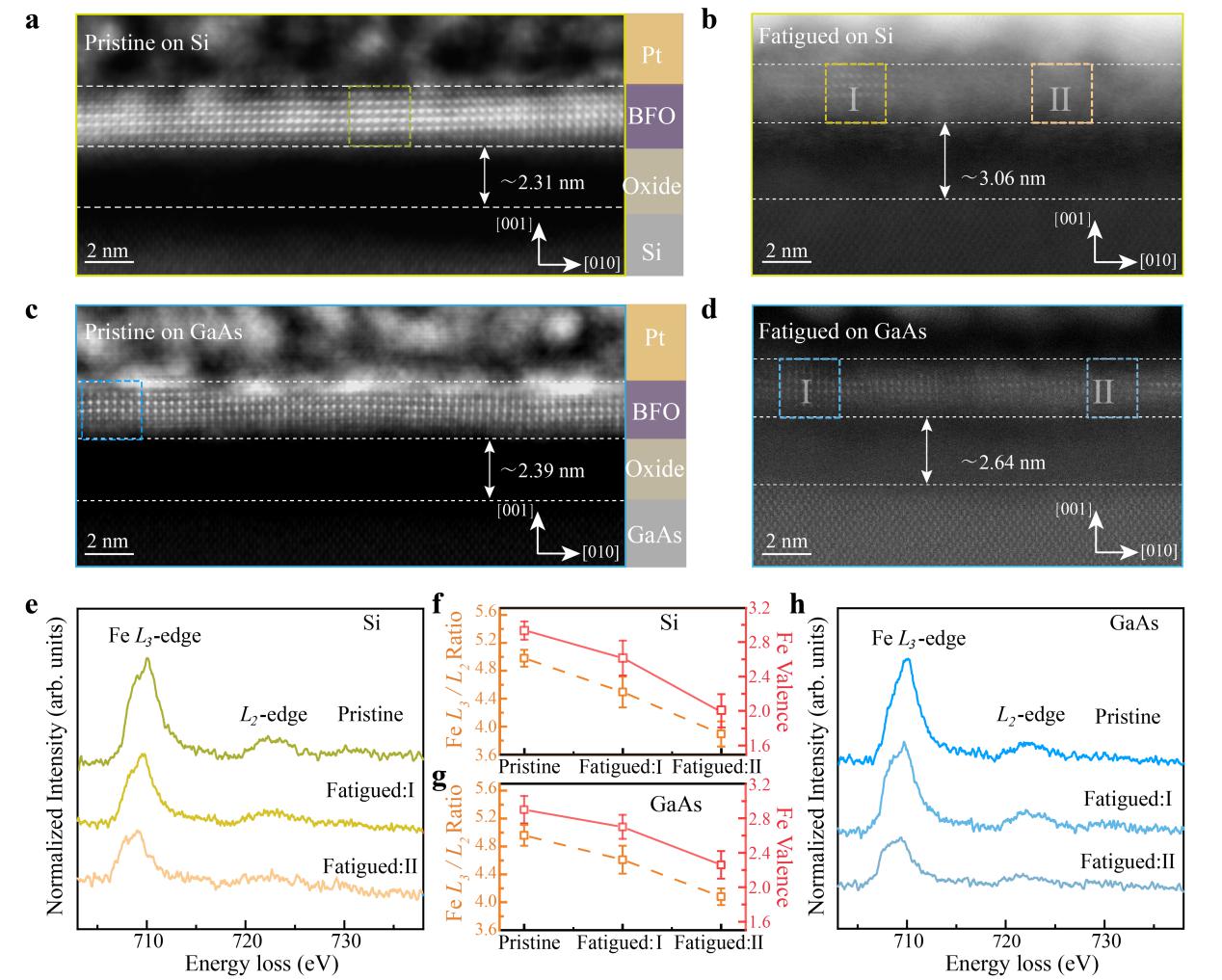Recently, Science Advances published a study by Profs. Yuefeng Nie, Yu Deng, and Di Wu from College of Engineering and Applied Sciences, Nanjing University, reporting the progress in understanding fatigue mechanisms in oxide/semiconductors ferroelectric tunnel junctions (FTJs). This work provides valuable insights for developing fatigue-resistant FTJ-based memory and memristor devices.
Perovskite oxide FTJ memristors, due to the simple structure, low-power consumption and simple weight update scheme, hold promising potential for applications in memory and neuromorphic computing. However, these FTJs are typically grown on single-crystal oxide substrates, and their compatibility with conventional CMOS processes remains challenging due to the high-temperature/high-oxygen-pressure growth conditions and lattice mismatch involved. Thus, integrating oxide FTJs with semiconductors holdssignificance in both fundamental research and device development. Recent advances in freestanding technology have enabled low-temperature integration of oxide films with semiconductors. Leveraging this approach, the team previously demonstrated high-performance ferroelectric synapses based on freestanding BiFeO3 (BFO) integrated on silicon [Adv. Funct. Mater. 34, 2316473 (2024)]. Yet, silicon-based FTJs still exhibit limited fatigue resistance during resistive switching—a key obstacle for practical applications. To address this, the team systematically investigated fatigue behaviors and uncover the mechanisms in FTJs devices integrated with various semiconductors (Si, Ge, GaAs). Figure 1 reveals GaAs-FTJs exhibit superior fatigue endurance (>108 cycles) over Si-FTJs (>106 cycles) under electric field cycling, approaching the performance of oxide-FTJs epitaxially grown on single-crystal substrates.

Fig. 1. Resistance fatigue performance of Si-FTJ and GaAs-FTJ.
Through high-resolution electron microscopy, the research team elucidated the atomic-scale fatigue mechanism in oxide/semiconductor FTJs, as illustrated in Figure 2. A comparative analysis of before and after fatigue structures revealed that fatigue originates from the oxygen vacancies accumulation within the BFO layer, which triggers progressive lattice collapse and consequent reduction in effective ferroelectric polarization. This structural collapse initiates at the semiconductor interface and propagates toward the top electrode. Electron energy loss spectroscopy (EELS) further demonstrated that lattice degradation coincides with the reduction of Fe valence states and increased oxygen vacancies generation. By comparing different semiconductor substrates, the fatigue behavior exhibited strong substrate dependence, with GaAs-based FTJs showing superior fatigue resistance. This phenomenon is attributed to the semiconductor's oxygen affinity: the weaker bonding interaction between oxygen and gallium/arsenic effectively suppresses oxygen vacancies formation and accumulation in BFO, thereby mitigating lattice damage.

Fig. 2. Atomic structures and Fe ionic valence states in the pristine and fatigued samples.
This work reveals the fatigue mechanisms in oxide/semiconductor FTJs, providing critical insights for realizing high-performance FTJs on semiconductor platforms. The findings advance the development of nonvolatile memory devices and neuromorphic computing. The study, entitled “Ferroelectric Tunnel Junctions Integrated on Semiconductors with Enhanced Fatigue Resistance”, was published in Science Advances (DOI: 10.1126/sciadv.ads0724). Dr. Ningchong Zheng and Ph.D. candidate Jiayi Li from the College of Engineering and Applied Sciences at Nanjing University served as co-first authors. Profs. Yuefeng Nie, Yu Deng, and Di Wu (all affiliated with Nanjing University) are corresponding authors. Dr. Haoying Sun contributed significantly as a key collaborator, while Prof. Yidong Xia (Nanjing University) and Prof. Xiaoqing Pan (University of California, Irvine) provided essential guidance.

